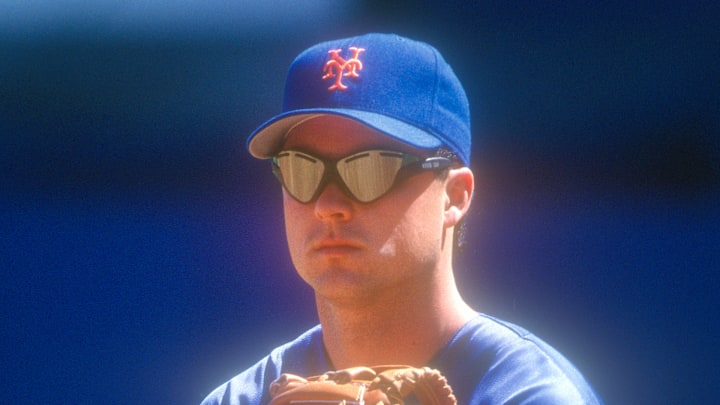Finishing second in a five-team division, which at one point included more than the current handful of teams, could have fans coming to an incorrect assumption that the season was somewhat successful. After all, if you finished second in the NL East, you should have at least come close to making it to the postseason by one way or another. The New York Mets have finished as the second-place team in the NL East multiple times in the franchise’s history. It hasn’t always been what we’d deem a successful year.
The 2014 Mets, for instance, were 79-83 and were 17 games behind. Usually good enough for third-place or possibly fourth, a weak NL East where they tied the Atlanta Braves for the second-best record behind the Washington Nationals gave them a rare distinction of being a below .500 second-place ball club.
It’s not the worst winning percentage, though. At .488, it’s second to the 1995 Mets who in a shortened season were 69-75, 6 games below .500 and with a .479 winning percentage.
The 1995 Mets were a second-place team with a record that suggested otherwise
A 144-game season in 1995 was much more complete than many of the past years where we didn’t get a full campaign. The strike which cut down the end of the 1994 season and created a lost World Series put a stain on the game. The Mets were already a bad ball club and some lost time wasn’t exactly the worst thing for a franchise chasing its own tail.
Like the 2014 Mets almost two decades later, this team was in a tie for second-place alongside the Philadelphia Phillies. The NL East was bunched up with the Florida Marlins at 67-76 and the Montreal Expos at 66-78. The eventual World Series-winning Braves ran away with the division at 90-54. The NL East was sealed up early with the Mets eventually falling to 21 games out by season's end.
As far as players go, they got 80 games from Bobby Bonilla before he was traded away. Long before he became a Mets punchline, he was actually a decent ball player for them in the early and mid-1990s. Bonilla hit .325 with 18 home runs and 53 RBI in 351 plate appearances. First baseman Rico Brogna led the team in home runs and RBI with 22 and 76. Statistically, the team wasn’t so bad with maybe the biggest complaint being a severe lack of power from several starters. Jeff Kent had a decent year and so did Todd Hundley.
Knee deep in Generation K, the team received 17 starts from Bill Pulsipher and another 14 from Jason Isringhausen. Each pitched well. Bobby Jones led the staff with 30 games started with Dave Mlicki trailing with 25 plus another 4 relief appearances. The bullpen wasn’t a disaster either. John Franco saved 29 games with a 2.44 ERA. Other less memorable relievers posted good numbers as well.
Everything about the 1995 Mets screams mediocre but maybe not as bad as their record said they were. Their 657 runs scored and 618 allowed suggests they should have been 76-68. If they only achieved what their run differential said they could, the 1995 Mets would have been one game out of the Wild Card spot that went to the 77-67 Colorado Rockies. Of course, they would have had to go to battle with the 76-68 Houston Astros in a winner-take-all battle royale or some sort of triple threat match with the Rockies involved as well.
Easily disregarded, the 1995 Mets were, in many ways, the last remnants of the worst team money could buy. They made several key additions before the 1996 season and would continue to improve in coming seasons. They don’t hang banners for second place, especially when you’re still 8 wins away from tying for a playoff spot. The regular power in the NL East will probably make it difficult to ever have a worst winning percentage than .479 and finish anything higher than third.
